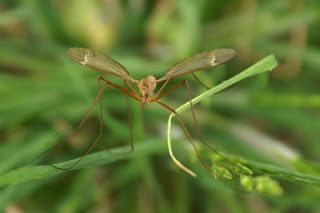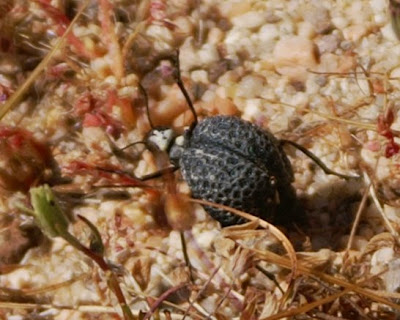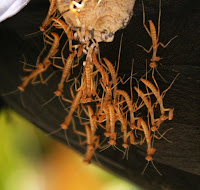
Every spring I've noticed little wads of white spittle on other people's plants, notably their rosemary and lavenders. My brother has a lavender hedge out front, and the spittle blobs look festive, almost like flowers to the uninformed. Finally this year my lavender was infested, so to speak, with the benign little pest that is spittlebug and I got the chance to look into who exactly was behind the white wads.


The spittle itself is excreted by glands on the bug and mixed with anal secretions. It feels a lot like marshmallow, except runnier. No idea on what it tastes like. The spittlebug nymphs make spittle to hide under a
 s they suck juices from the host plant. Bad as that sounds, I've not seen where they do a great deal of damage to the plants, though I imagine if they are in large enough numbers they could. In the case of my spittlebugs, there was one bug in each spittle wad and just a few wads here and there. Along with the lavender the bugs were found on the nearby euryops virgineus and calocephalus brownii in small numbers. Spittlebugs are small as you can see by the photo of the one that crawled right onto my pencil all by itself.
s they suck juices from the host plant. Bad as that sounds, I've not seen where they do a great deal of damage to the plants, though I imagine if they are in large enough numbers they could. In the case of my spittlebugs, there was one bug in each spittle wad and just a few wads here and there. Along with the lavender the bugs were found on the nearby euryops virgineus and calocephalus brownii in small numbers. Spittlebugs are small as you can see by the photo of the one that crawled right onto my pencil all by itself.Twenty days after these photos of the nymphs were taken I happened to be looking in the right direction and saw an adult. It tolerated a few photos then hopped off with surprising force. The photo that looks head on is actually a
 rear view; the adults are done up with face-like markings on their posterior.
rear view; the adults are done up with face-like markings on their posterior.I looked through 25 pages of family cercopidae:spittlebug photos on Bugguide but did not see one that matched both the nymph and adult appearance. Spittlebug, I now know your faces but not your name.












































